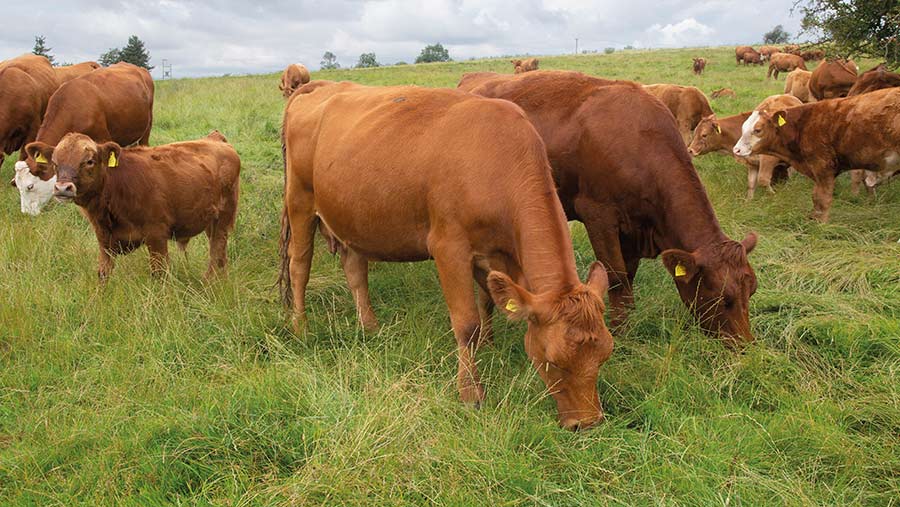Opinion: Support needed to halt the decline in suckler cow numbers
 © Tim Scrivener
© Tim Scrivener Since 2018, the suckler herd in England has reduced by more than 7%, a figure that should be ringing alarm bells in Defra corridors.
The speed of decline is worrying and will only increase further if support is not forthcoming soon.
Every sector – from finishing, to processing, to retailing – requires a continuous and steady supply of cattle, and producers work hard to provide this.
Numbers are already tight after the Covid-19 pandemic, and will not improve if we do not protect production at suckler cow level.
See also: Fears of suckler downsizing amid cull-cow bonanza
About the author

Neil Shand is chief executive of the National Beef Association and organiser of NBA Beef Expo.
Here he sets out the case for more support for suckler cows in England and Wales.
The current situation with regard to levels of support across the devolved nations is varied, to say the least.
I’m not against devolution, but the current scenario is ludicrous.
Scotland’s beef calf scheme pays approximately £100 for every three-quarter-bred beef calf that is born and retained on a farm for 30 days (£145 a head for the islands).
This has been in place for many years and is financed by modulation of existing subsidy payments from active farmers in Scotland across all sectors.
Northern Ireland is proposing a similar schemes. Yet I see nothing in the pipeline that will take producers in England and Wales close to current or potential support in NI and Scotland.
“Levelling up” is a buzz phrase at the moment, and describes exactly what is needed here.
The schemes in Scotland and, potentially, Northern Ireland give a great template for Defra to encourage a necessary increase in numbers of suckler cows.
England, as the most populated country, is the main consumer of beef produced in the other home countries.
If production support does not level up, the lack of support will ensure suckler numbers continue to fall, and with it the ability to feed ourselves.
Cattle number reduction leads to corresponding reductions in organic matter and, subsequently, the ability to re-energise our soils.
It would seem ideal to include links to efficient livestock production within the Environmental Land Management scheme as part of the “intermediate” level.
With a bit of innovative thinking, the government’s 2030 target of reducing methane emissions by 30% could be achieved if support is channelled in the right places.
Let’s pay the suckler producer a standard headage payment for each calf born, with an enhancement for best practices that lead to a reduction in methane through a combination of reduced age at slaughter, better calving index, feed efficiency, genetic gain, cow days at grass, and eradication of endemic disease.
This ticks all the boxes, giving all sides a little bit of what is required; producers receive more support, government achieve reduction targets and greater food security.
Beef production is not only vital for our food security, but also for our beautiful country’s land management; it is the epitome of public money for public good.
While environmental gain is also important, there has to be balance – livestock is part of the solution, not part of the problem.
A quick Google search defines agriculture as the art and science of cultivating soil, growing crops and raising livestock, and the preparation of plant and animal products for people to use.
Agriculture in this sense has been around for as long as the planet has been populated. Trees are a great asset to our planet, to our environment and to our sense of beauty in the countryside.
But they don’t all provide organic matter to fertilise their own soil, they cannot manage themselves, and you cannot eat them to survive.
